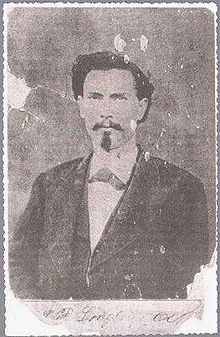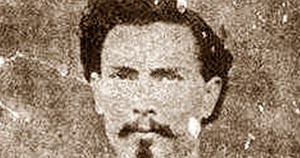
East Entrance To The Museum

The Star Of India
The DeLong Star Ruby
The Midnight Star

The Eagle Diamond
Theft discovered by museum guard John Hoffman shortly before 10:00 in the morning as he unlocks the hall's doors, the cops quickly receive a tip which will crack the case. Patrolling the Upper West Side, Vice Squad Detective James Walsh is told by the front desk clerk at the Cambridge House Hotel (located on West 86th Street, only a short walk from the scene of the crime) that there are three men in the establishment that have been spending money and partying recently as if they own a printing press for money (not keeping inconspicuous, after moving over from the more expensive Stanhope Hotel, the men in question tip a bellboy $100 for bringing them liquor, buy two cases of soda pop just to get the bottle tops for a flipping game they are playing, accost a Barry Goldwater election canvasser, throw raucous parties, and are known for often wearing brightly colored beach attire). Search warrant obtained (Room 1803 is a suite which rents for $525-a-month), inside the police find marijuana, a small amount of heroin, a floor plan of the museum, sneakers embedded with broken glass, scales, books about precious stones, and burglary equipment ... enough evidence that Detective Jack McNally, the officer that has drawn the case decides to stay in the penthouse to see if anyone might show up. Bingo! The next morning, after visiting his family in Connecticut, one of the thieves returns to the room, Roger Frederick Clark, a 29-year-old former high school lifeguard and Navy veteran, who after finishing his service, tries the straight life in a 9-5 job at a chemical factory, tires of it quickly, and then moves to the warmth of Miami where he holds down odd jobs around the community before he drifts into crime. Confessing to dropping off the gem thieves at the museum and serving as their lookout, driving around the streets surrounding the museum complex while the crooks are inside (he will later recant his confession and plead not guilty during his trial, claiming New York's finest have beaten him to obtain information ... found guilty, he will serve two years behind bars, be released, and die of a heart attack in 2007 at the age of 71), he also provides the authorities with the names of his two Florida confederates ... 26-year old Allan Dale Kuhn and 27-year-old Jack Roland Murphy.
Investigation - Broken Case
Also a veteran of service in the Navy (in a submarine), Kuhn comes from a poor childhood in West Grove, Missouri in which his father abandons his family and his mother works menial jobs constantly to support him and his younger sister. Out of the service in 1962, he is soon in Miami Beach where he lands a job as a swimming instructor at the Casablanca Hotel ... while there, a bartender introduces him to a local jewel thief that dares the young man to finish the heist the wounded outlaw as just failed to complete. Kuhn accepts the challenge and finds he loves the adrenaline rush that follows success ... he also enjoys receiving an envelope containing $180,000 for his night's activities. New occupation chosen, Kuhn is soon living in a ritzy apartment building, drives around town in a white Cadillac, and enjoys beach life that include owning a speedboat and a sailboat, skin diving, and burning through money as if there is no tomorrow. To keep his various parties going, he is soon partnered up with another beach enthusiast with similar tastes and abilities, Murphy.

Kuhn
Known by Miami police as Murph the Surf, Murphy came by his love of having sand between his toes and not working hard the natural way ... growing up the only child of a telephone-company lineman and a full-time housewife, he grows up in the Southern California community of Oceanside, becoming a surfing champion, and a good enough tennis player to receive a scholarship to play tennis for the University of Pittsburgh when the family moves east in the 1950s ... and additionally, he is a talented musician too, playing the violin with the Pittsburgh Symphony Orchestra at the age of only 15. Intelligent, good looking, and talented, it all is thrown aside in his freshman year in college, when on a snowy day, the 18-year-old decides he needs warmth and the ocean again and takes a train south to Miami. In the sunshine state he goes through a host of jobs ... he weaves palm hats on the beach for tourists, teaches and hustles tennis, gives swimming lessons, plays the violin, stacks pool chairs, rakes the sand for the hotels, paints cabanas, performs in a stunt diving show, and owns a surfboard shop. He also marries twice, has two children (both sons with well-to-do hotel guest, Gloria Sostoc), performs at the Latin Quarter nightclub, dances the nights away at the Hotel Fontainebleau's Poodle Room, meets the Beatles at the pool at the Deauville Hotel's pool, and mingles with up-and-coming boxer Cassius Clay at Miami's 5th Street Gym. When he receives $15,000 for driving the boat that takes a crooked friend on a burglary of a millionaire's ocean front estate, his head is turned by the profits to be made in crime ... and instead of just driving the boat, he is soon going inside local mansions and making his own heists.

Violinist
Surf Shop
Local authorities eventually become wise to the activities of the men, and there are frequent arrests, but no convictions, and wanting to keep things that way, with third partner Clark, Kuhn and Murphy decide to let things cool off in Miami by taking in the sights of New York City. Arriving behind the wheel of Kuhn's Cadillac, the trio visit the city's must-see-sights, go to the World's Fair, and after taking in a showing of the Jules Dassin crime-caper film, Topkapi, in which a group of crooks steals a dagger from Istanbul's Topkapi Palace, decide to treat themselves to some of the valuables to be found in the New York City American Museum of Natural History. Target cased numerous times (the museum is a thief's paradise ... the tops of all of the fourth floor gem hall's 19 exterior windows are left open two inches each night to facilitate museum ventilation, and none are equipped with burglar alarms, the burglar alarms on the gem display cases all have dead batteries, and because nothing had happened at night for years and years, a guard was no longer stationed inside the Hall of Gems after the museum closed for the evening) and plans made, the group strikes on the evening of October 29, 1964.

Movie Poster
Dropped off by Clark at the back of the museum, Kuhn and Murphy climb over a spiked steel fence into the facility's courtyard, Kuhn ascends a 125-foot museum wall, climbs on to a ledge, where he lowers a rope to Murphy, then once Murphy pulls himself up to the ledge, make their way inside from one of the structure's open fourth floor windows. Inside, using duct tape and a glass cutter, the men break into the display cases holding the gems that have fascinated them for months, expecting to sell the gems on the international black market fr such items. Treasures in hand, they then reverse the process to the outside, and take separate cabs away rom the museum. The next morning, before the crime has even been discovered, accompanied by Kuhn's girlfriend, beautiful 19-year-old Staten Island native Janet Florkiewicz, traveling under assumed names, take an Eastern Airlines flight back to Miami. Almost a perfect crime ... almost, if not for drawing attention to themselves by partying too hard and Clark returning to their hotel room to get some shuteye before driving back down to Florida. Busted in Miami only 48-hours after their heist, the men tussle with the justice system that knows they did the deed, but has trouble proving it without the gems as evidence.

Murphy & Kuhn
Justice leverage provided when actress Eva Gabor (the star of the TV hit comedy Green Acres), identifies a photo of the men in a newspaper as the crooks that pistol-whipped and stole a diamond ring from her the year before valued at $25,000 while she was visiting the Racket Club in Miami with her husband, and will testify so in open court (she later decides not to press charges). Deals made with $100,000 bail bonds being held over their heads, the Star of India and eight other gems (along with the Star of India, the bag includes the Midnight Star, five emeralds, and two aquamarines) are found in a wet chamois bag stored in a bus-station locker and returned to the museum, the DeLong Ruby is reacquired from a telephone booth after a Florida millionaire named John D. MacArthur pays a small ransom fee of $25,000, Florkiewicz is let go (after three months in police "custody), Kuhn, Murphy, and Clark plead guilty to small burglary and grand larceny raps that allow them to be back on the streets within three years (after serving time at the New York City Correctional Facility on Riker's Island, and a Florida fence, Duncan Pearson, is sentenced to ten years at Riker's for trying to hide the gems (a sentence longer than the combined sentences of the actual crooks). The other booty from the robbery is never seen again, and is believed to have been cut into smaller gems and sold internationally.
Murf The Surf In Shades
Released, Clark will never dapple in crime again, becomes a bartender and golf pro, and eventually settles in Mt. Snow, Vermont, where he spends 15 years working at a French restaurant called Le Petit Chef. Kuhn for a brief time continues to pull off heists after getting out of jail, but constantly pursued by the authorities, changes his ways in 1967, shortly after getting married, moves to California, finds peace in his beliefs about UFOs and New Age spirituality, lives in a tiny Northern California mountain town a two-hour drive from the nearest airport, and eventually as a childless widower, grows medical marijuana for insomnia in his backyard. Unrepentant upon his release, Murphy continues his life as a criminal, and in 1967 hits rock bottom when he participates in the murder of two women (along with partner Jack Griffith), Terry Rae Frank and Annette Marie Mohn, suspects in a robbery of $488,732 worth of stock from the brokerage house they worked at in California, when while out on a boat on Florida's Whiskey Creek, the women demand a bigger share of the loot. Avoiding a death sentence when the jury that finds him guilty of the murder of Terry Rae Frank recommends mercy (his lawyer pleads him not guilty by reason of insanity for the other homicide), Murphy is sentenced to life in prison at hard labor. Story potentially over rotting in jail, instead, following a visit to the Florida State Prison by Bill Glass, Roger Staubach, and McCoy McLemore finds religion and decides to change his life, participating in the institutes chaplaincy program, mentoring other prisoners on various subjects, and leading Bible Study classes. For good behavior, his help inside the prison's walls, and a $2,500 donation to Meals On Wheels, in 1986 Murphy is back on the streets again ... but different this time. He begins visiting prisons all over the country, is hired by Bill Glass Champions for Life, and becomes a featured speaker for a number of prison ministries, visiting over 1,200 prisons ... work that allows authrities to terminate his "lifetime parole" in 2000. As of 2011, the once-upon-a-time beach bum and punk lives in Crystal River, Florida with his wife Kitten and his grandchildren, and is an author and the honored vice-president of the International Network of Prison Ministries. Amen and mercy ... what a life.
Arrested, Wounded Crook
Football Star Bill Glass
Minister Murphy

 .
. 